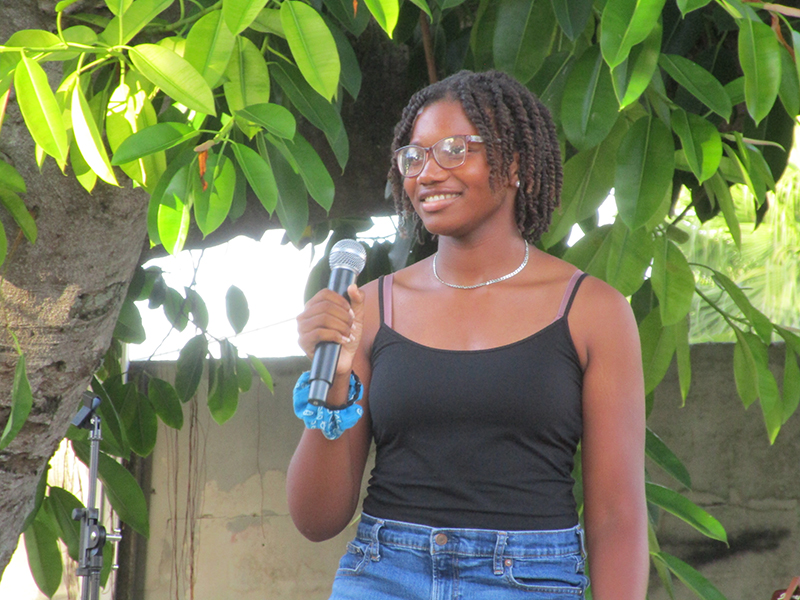Review: Black Healing Collective, Youth Justice
[Written by Dale Butler]
Ajala Omodele, a young Bermudian social studies teacher and author, used his knowledge as one of the leaders of the Youth for Justice and the Black Healing Collective to pour a libation reminding the audience about the sacred venue we stood in and the healing that needed to take place in the Bermuda community.
The Warwick Rubber Tree was the venue for this event on Sunday, August 23, 2020, timed to co-ordinate with the historic August 22, 1791-1804 Haitian Revolution, which was “the only slave uprising that led to the founding of a state which was both free from slavery, and ruled by non-whites and former captives.”
Internationally this was also the International Day for the Remembrance of the Slave Trade and its Abolition.
For years, Bermuda seniors indicated that the carpark and post office was a graveyard for slaves because they were not allowed to rest in peace in the same graveyard as the whites buried directly across the road at St. Mary’s Church.
To date, no written confirmation has been found to verify this, but in light of how black slaves were buried all over the island, this is most likely absolutely true, even though no bones were found when excavation was carried out prior to building years ago. But with the probability of it being a graveyard so high, the St. Mary’s church erected a memorial there and the PLP Government erected a sign to signify and accept, once and for all, that it was indeed a graveyard to bury slaves.
Turned into a trash dump prior to development, it was said that this marshy landscape exhibited “skulls floating after a hard rain.” Mr. Omodele, as an historian, underlined this and the fact that slavery was not benign in Bermuda.
With over 25 years experience, the Bermuda/African drummers and dancers Bermuda Donquili set the sombre atmosphere when Ajala gave a libation by pouring water as an offering to the gods in memory of the slaves as a sacred covenant between the material and the spiritual worlds.
The group was led by Michael Simmons with Jade Bean, Jumar Hayward, Naji Bean, and Iejah Caines. The dancers revealed that the troupe still has energy and is endeavoring to recruit young members to keep the history alive.
In keeping with the groups African tradition, educator and author Dr. Muriel Smith was asked if they could proceed with the event. She readily approved and later gave a presentation highlighting the impact of the late Dr. Kenneth E. Robinson who authored several outstanding books including the definitive but ignored Heritage. Music performances came from Sari Smith, Ashley Aitken, and Ayana Bean.
The group leaders outlined their goals, Saltus student Ywione Darrell gave a paper on the slave trade, and Tiffani Paynter offered an original poem entitled ‘Ode to Kairos.’ Both were well received. But it was left to Rajai Denbrook who had earlier danced spontaneously with the drummers, to sing ‘Deep River.’ The late American singer, actor, and black activist Paul Robeson [1898-1976] would have been most proud. And to think all of this came free.
This very well organised evening of historic proportions, hosted by Liana Hall, helped launch the group with an ambitious group of objectives. Also present were CURB officials, Lynne Winfield and Cordell Riley, and The Griot Bookstore.
The attentive audience was most appreciative of the evening and when the Warwick Gombeys finished the night it was obvious that they had shown great respect to the sacred ground that provided an opportunity to reflect on the past and also to write plans about the future to bring about social justice.







